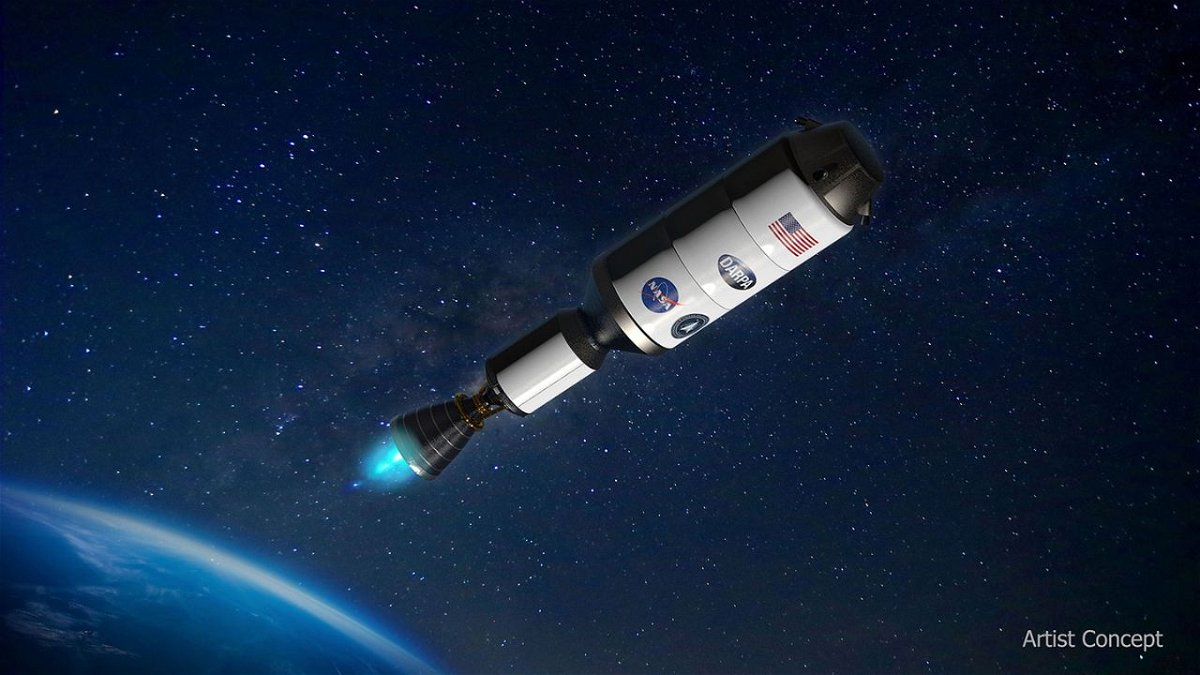NASA to test nuclear thermal rocket engine for the first time in 50 years

By Jackie Wattles, CNN
(CNN) -- A nuclear thermal rocket engine in development could one day transport humans to Mars.
The Defense Advanced Research Projects Agency, a research arm of the US Department of Defense, and NASA are setting their sights on a type of rocket engine that could be the holy grail for quickly and safely getting humans to the red planet. The first tests could occur as soon as 2027, according to a Tuesday news release from the space agency.
"DARPA and NASA have a long history of fruitful collaboration in advancing technologies for our respective goals, from the Saturn V rocket that took humans to the Moon for the first time to robotic servicing and refueling of satellites," DARPA director Dr. Stefanie Tompkins said in a statement. "The space domain is critical to modern commerce, scientific discovery, and national security."
The US military and NASA sought to develop this type of technology in the mid-20th century, but the program stalled. Now, the initiative is gaining new traction in the modern era as the Demonstration Rocket for Agile Cislunar Operations, or DRACO, program.
Research into nuclear thermal rocket engines by NASA began in 1959. A key program in the 1960s, called the Nuclear Engine for Rocket Vehicle Application, even sought to demonstrate the technology in space — but that never came to fruition.
"Funding for NERVA, however, decreased in the late 1960s and the program was cancelled in 1973 before any flight tests of the engine took place," according to the space agency's website.
These days, NASA has renewed interest in sending humans to the red planet. The space agency's Artemis program, which had its inaugural uncrewed test flight to the moon last year, directs the space agency to return humans to the lunar surface as a stepping stone for eventually putting the first humans on Mars.
"Recent aerospace materials and engineering advancements are enabling a new era for space nuclear technology, and this flight demonstration will be a major achievement toward establishing a space transportation capability for an Earth-Moon economy," Jim Reuter, associate administrator for NASA's Space Technology Mission Directorate, said in a statement.
Powerful nuclear thermal engines
As the name implies, a nuclear thermal engine would rely on a nuclear reactor, using a process called atomic fission — in which a neutron slams into an atom to rip it apart, setting off a powerful chain reaction — to heat up propellant and provide the thrust needed to propel a rocket through space. (The nuclear fission process is better known in the public consciousness for its role in energy production, and NASA previously signed a deal with the US Department of Energy to research its applications for space travel.)
That process, according to NASA, is three or more times more efficient than the chemical propulsion used by the rockets currently in operation, in which an explosive fuel is mixed with an oxidizer to create a fiery blaze of thrust. The more efficient nuclear process, NASA said, could allow spacecraft to traverse the 140 million-mile (225 million-kilometer) average distance between the Earth and Mars far more quickly than is possible today, greatly reducing the amount of time astronauts are exposed to dangerous levels of radiation on future deep-space missions.
Under the agreement with DARPA — which is perhaps best known for its role in laying the groundwork for the internet — NASA will lead the technological development of the new engine. DARPA will design an experimental spacecraft, as well as lead the overall program, according to the contract.
The-CNN-Wire
™ & © 2023 Cable News Network, Inc., a Warner Bros. Discovery Company. All rights reserved.